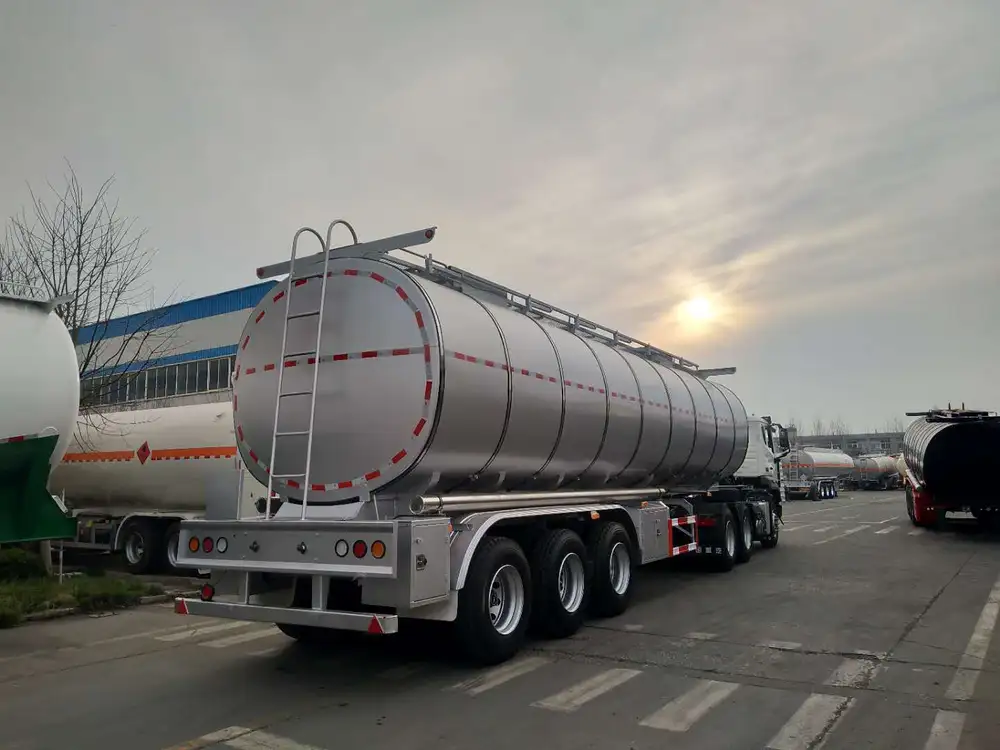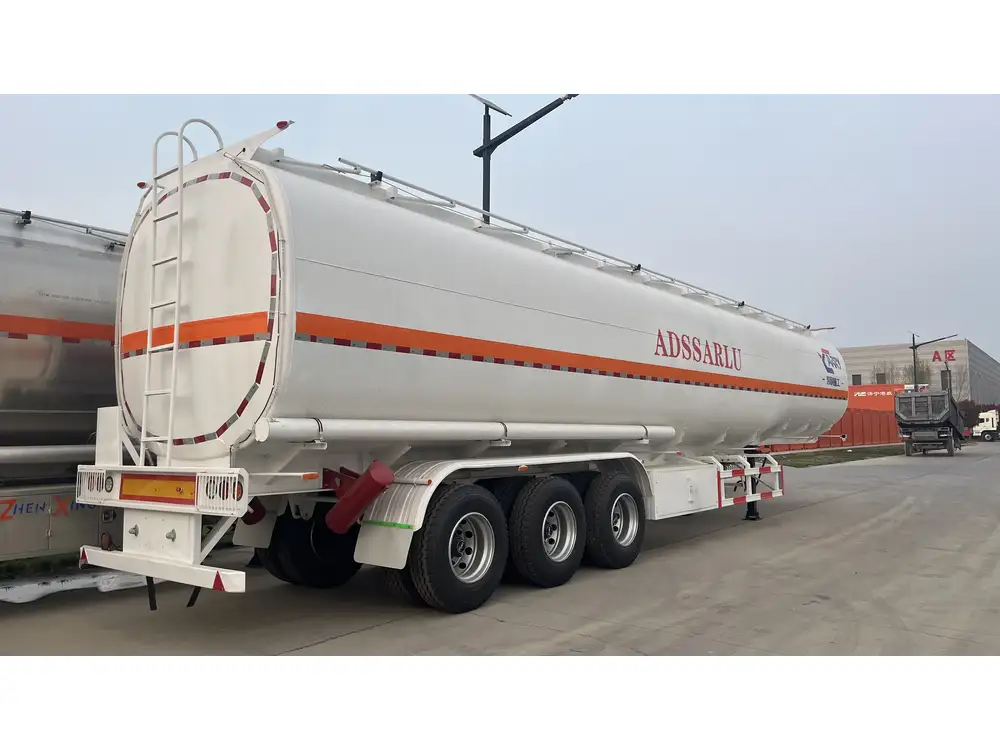In the dynamic landscape of heavy-duty transportation needs, the fuel transfer tank on trailer for sale in Guinea stands out as a pivotal solution. These tanks not only ensure the uninterrupted supply of fuel to machinery and vehicles but also enhance operational efficiency, making them ideal for various sectors, including agriculture, construction, and mining. Here we will explore the manifold advantages of investing in a fuel transfer tank, focusing on its features, the intricacies of purchase considerations, and the best practices for usage.
Why Choose a Fuel Transfer Tank?
Versatility in Application
Fuel transfer tanks serve countless purposes across different industries. Whether supplying fuel to large construction equipment or fueling agricultural machinery in remote areas, having a mobile solution proves indispensable. This versatility allows businesses to operate without confines, boosting productivity.

Enhanced Safety Features
Modern fuel transfer tanks are designed with safety as a priority. Equipped with spill containment systems, overfill prevention, and secure locking mechanisms, these tanks dramatically reduce the risk of environmental contamination and hazardous spills. Ensuring safe transportation of fuel plays a critical role in protecting your business and maintaining compliance with local regulations.
| Feature | Benefits | Importance |
|---|---|---|
| Spill Containment | Minimizes environmental risks | Compliance and safety |
| Overfill Prevention | Avoids fuel waste and spills | Cost saving and efficiency |
| Secure Locking | Protects against unauthorized access | Prevention of theft |
Key Features of a Quality Fuel Transfer Tank
Construction Material
A fuel transfer tank’s construction material significantly influences its durability and longevity. Typically made from highly resilient materials such as high-grade steel or aluminum, these tanks can withstand harsh climatic conditions. This robust construction ensures resistive properties against corrosion, extending the life of the tank and reducing maintenance costs.

Capacity and Size
Selecting the right capacity is crucial. A larger tank can store more fuel, reducing the frequency of refilling. Conversely, smaller tanks are more maneuverable and better suited for tighter spaces. Therefore, understanding specific operational needs allows businesses to make an informed choice.
Ease of Use
The user-friendliness of fuel transfer tanks cannot be overstated. Features like electric pumps, efficient fuel hoses, and integrated filtration systems make the fueling process smoother and faster. A well-designed tank will minimize downtime and optimize workflow.
Factors to Consider When Purchasing

Regulatory Compliance
Navigating the regulatory landscape is paramount when purchasing a fuel transfer tank. In Guinea, businesses must ensure their equipment adheres to local laws and standards concerning fuel storage and transportation. Consulting with experts in local regulations can save time and prevent costly penalties.
Cost vs. Value Analysis
It’s essential to weigh the initial investment against potential long-term benefits and savings. Paying a premium for quality machinery may lead to reduced maintenance costs and higher efficiencies down the line. This cost vs. value analysis aids in making a judicious decision regarding your investment.
Supplier Reputation
Selecting a reputable supplier can make all the difference in your purchase experience. Companies like CarMax Vehicle, known for their extensive expertise in manufacturing semi-trailers and fuel transfer tanks, provide not only quality products but also reliable customer support before, during, and after the sale.

Maintenance Best Practices
Regular Inspections
Maintaining a fuel transfer tank involves regular inspections to ensure all components are functioning correctly. Look for signs of wear and tear, corrosion on the surface, and any leaks in the system. Proactive inspections can catch minor issues before they escalate into major problems.
Cleaning and Care
Routine cleaning is necessary to prevent algae buildup and other contaminants. Implementing a regular cleaning schedule will prolong the lifespan of the tank and its components. Use non-corrosive cleaning agents and ensure that the tank is dried completely before refilling.

Proper Fuel Handling
Training personnel on the proper handling and transferring of fuel is vital. This not only minimizes the risk of accidents but also ensures compliance with safety standards. Emphasizing best practices in fuel transfer operations can significantly enhance workplace safety.
Operational Efficiency
Increased Productivity
When properly utilized, a fuel transfer tank can provide uninterrupted fuel supply for operations. This translates into minimized downtime and maximized productivity for heavy machinery, which is essential for industries such as construction and mining.

Cost-Saving Mechanism
Investing in a fuel transfer tank means direct savings. In-house fuel supply reduces reliance on third-party suppliers, trimming down transportation costs and guaranteeing consistent fuel quality. Over time, the financial resources saved can be reinvested into expanding your operational capabilities.
Conclusion
Investing in a fuel transfer tank on trailer for sale in Guinea presents a robust solution for businesses seeking efficiency and reliability in fuel transportation. With everything from safety features to operational costs evaluated, choosing the right tank ultimately boils down to understanding your specific needs and ensuring adherence to local regulations.
The agility of having a mobile fuel supply at your fingertips is not just a convenience; it becomes a critical element of operational strategy. By partnering with trusted manufacturers such as CarMax Vehicle, you are assured a product crafted with excellence and backed by comprehensive customer support. Fuel your ambitions—take the plunge today and secure your fuel transfer tank for a more seamless operation tomorrow.
FAQs

1. What is the average capacity of fuel transfer tanks?
Fuel transfer tanks typically range in capacity from 100 gallons to over 1000 gallons, with the larger sizes catering to heavy-duty applications in construction and agriculture.
2. How can I ensure my fuel transfer tank meets safety standards?
Regularly consulting updated local regulations, conducting inspections, and employing trained professionals for operation can help ensure safety compliance.
3. What type of fuel can I store in a fuel transfer tank?
Most fuel transfer tanks are designed to accommodate diesel, gasoline, and kerosene. However, it’s crucial to verify compatibility based on the manufacturer’s specifications.

4. How often should I clean my fuel transfer tank?
It is advisable to clean the tank at least once a year or more frequently if you notice contamination or after prolonged usage, to ensure optimal performance and prevent algae buildup.













Reviews
There are no reviews yet.